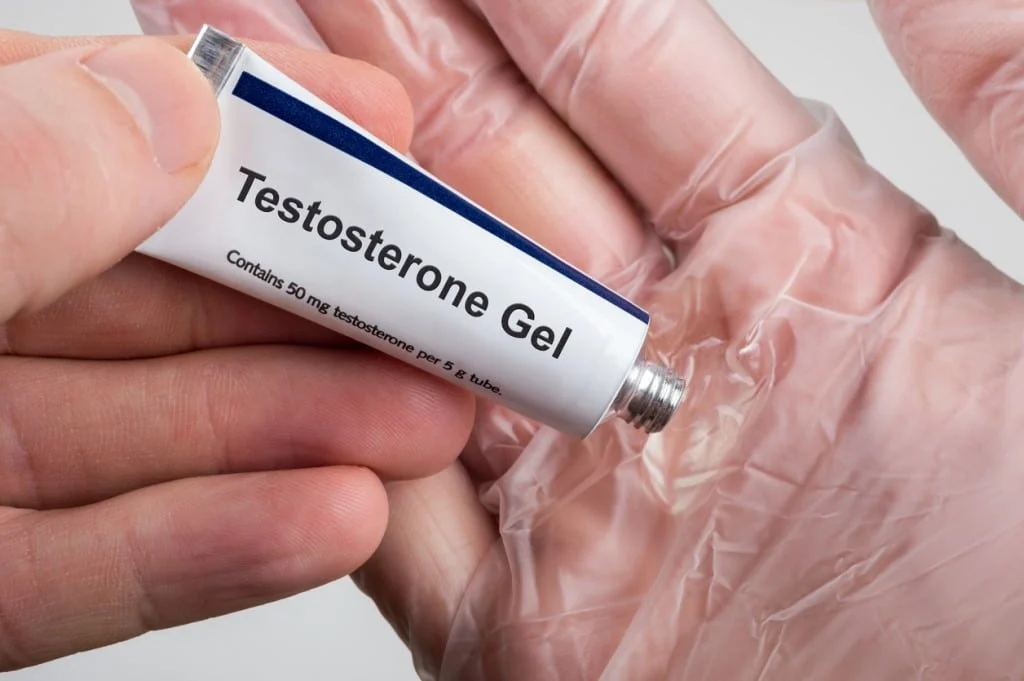All About Low-T (Testosterone)

Low-T (Low Testosterone), otherwise called hypogonadism, is a condition in which a patient’s testes (testicles, the male reproductive glands) do not produce an adequate amount of testosterone, a male sex hormone. Beyond sex drive, testosterone has many important functions in a person’s body, including the development of the bones and muscles, and factors related to a person’s appearance. Low-T can really impact a patient’s health and treatment is thankfully becoming more common because of the reduced stigma around it.
Testosterone is what helps men develop during puberty and helps them develop body and facial features like facial and body hair, deeper voice, and muscle strength. Men also need testosterone to produce sperm. As men age, testosterone levels generally decrease. Usually, this decrease is small, but sometimes, the decrease is drastic, causing issues and deficiency for patients. This deficiency (Low T) causes many symptoms, as mentioned below. While it can be difficult to identify how many men suffer from Low T, it has been suggested that 2 men in every 100 men suffer from this condition.
Symptoms of Low T
Low T has quite a few symptoms and it is common that patients will notice their bodies acting differently than it once did because of it. Here are some of the most common symptoms related to Low T:
- Fatigue
- Lack of concentration
- Inconsistent weight gain
- Muscle mass loss
- Enlargement of breast tissue
- Erectile dysfunction
- Ejaculatory dysfunction
- Infertility
- Loss of libido
- Hot flashes
- Osteoporosis
If you are noticing any of the symptoms mentioned above, we recommend that you contact your urologist to get a proper diagnosis right away, but before we discuss the diagnosis process, let’s see what the most common causes of Low T are. Some of the symptoms mentioned above might be in relation to Low-T while others may just be in conjunction with it. With the help of your doctor, you can find out what is being caused by your condition and what isn’t, along with what should be done to help your condition.
Causes of Low T

Source: focalpointvitality.com
Low T is a fairly common problem, as mentioned, and can be caused by a myriad of things. When we talk about the causes of Low T, we have to break the causes down into two different categories: primary hypogonadism and secondary hypogonadism.
Primary hypogonadism is caused by the failure of the testicle to produce an adequate amount of testosterone. Particularly in men, 90 percent of testosterone is made in the testicle while around 10 percent is created in the adrenal glands. One of the most obvious causes of primary hypogonadism is in the surgical removal of a testicle. A testicle may have been surgically removed because of mumps, malignancy, infection which has led to damage, excess steroid use which has led to testicular atrophy, or testicular torsion. When a testicle is removed, less testosterone can be produced, because the majority of testosterone is produced in the testicles, with a small amount also produced in the adrenal glands.
Secondary hypogonadism, instead of being caused by less production of testosterone due to the lack of a testicle, is instead caused by the lack of signals being sent by the pituitary gland to the testicle to stimulate the production of testosterone. Oftentimes, this condition is caused by a different condition, such as:
- Aging
- Obesity
- Testicular injury
- Hormonal disorders
- Infection
- Chronic liver or kidney disease
- Type 2 diabetes
- HIV/AIDS
- Prolactinoma or other pituitary disorders
- Kallmann syndrome (Abnormal hypothalamic development)
- Tuberculosis and sarcoidosis or other inflammatory diseases
- Opiate pain medication and steroids
- Elevated state of estrogen/estradiol
Diagnosis of Low T
If you are experiencing any of the symptoms above and think any of the causes mentioned might be causing Low T in your body, we recommend that you get an official diagnosis from your urologist. The diagnosis process usually goes as follows:
- Your doctor will first take or create a detailed history and physical examination focusing on the genitalia as well as recognizing the signs of delayed puberty.
- Your doctor will take blood tests to evaluate the levels of free and total testosterone along with FSH/LH and estrogen and estradiol
- Other tests taken may include prolactin level tests, baseline semen analysis, cranial imaging, genetic testing such as chromosome testing, or biopsy of the testicle
Treatment for Low T

Source: miamiurologyconsultants.com
When your doctor works with you to create a treatment plan, its composition will depend greatly on the type of hypogonadism you are experiencing and whether you desire to remain fertile or not.
If you would like to remain fertile and would like to boost your testosterone levels, your doctor may recommend Clomid, a pill commonly used to treat infertility, or might recommend injections of human chorionic gonadotropin (HCG). Because Clomid is a pill, rather than an injection, it is often favored by patients.
If you have no desire to remain fertile, doctors may recommend direct testosterone replacement therapy. Here are some options for patients in this group:
- Short or long-term testosterone (Aveed) intramuscular injection
- Implantation of testosterone pellets (Testopel), quarterly
- Topical application of testosterone (Androgel/Testim/Fortesa/Axiron), daily
- Application of testosterone patch (Testoderm), daily
- Slowly dissolving gum or cheek formulation (Striant)
If an individual has begun receiving testosterone therapy, they will need to be closely monitored by their doctors. This is because they will need to keep an eye on not only testosterone levels but also levels of estrogen, estradiol, PSA, complete blood count, complete metabolic panel, and lipid profiles.
Risks
Before any patient begins to undergo testosterone therapy of any kind, they should be aware of the potential risks and should consult a urologist that has a great deal of experience and is certified, a google example would be Dr. Howard Tay. As long as a patient is closely monitored, treatment is typically safe, but risks should be noted beforehand. Here are some of the most common risks related to testosterone therapy:
- Stroke
- Prostate enlargement
- Coronary artery disease
- Discovering the presence of occult prostate cancer
Before Getting Treatment for Low T
Before you confirm you have Low T, you should meet with your doctor to discuss a legitimate diagnosis and discuss your options.
